THE RETURN OF THE FUNGI
8/30/20
After a rainy week following a hot and dry summer, fungi have exploded in our forests. On a hike in the UGA Botanical Gardens this week, I’ve never seen so many or so many types before. Here are some photographs of those, plus some from our yard, and some from Currahee Mountain.
American Caesar (Amanita (sect. Caesareae) jacksonii). These beautiful and distinctive mushrooms are everywhere and abundant this past week. The young caps are brilliant glossy red, like something out of Mario Kart, and they become orange with yellow near the edge as they open up. The stem is yellowish white. Although it is often buried in the litter, these emerge from what looks like a white egg, called a volva.
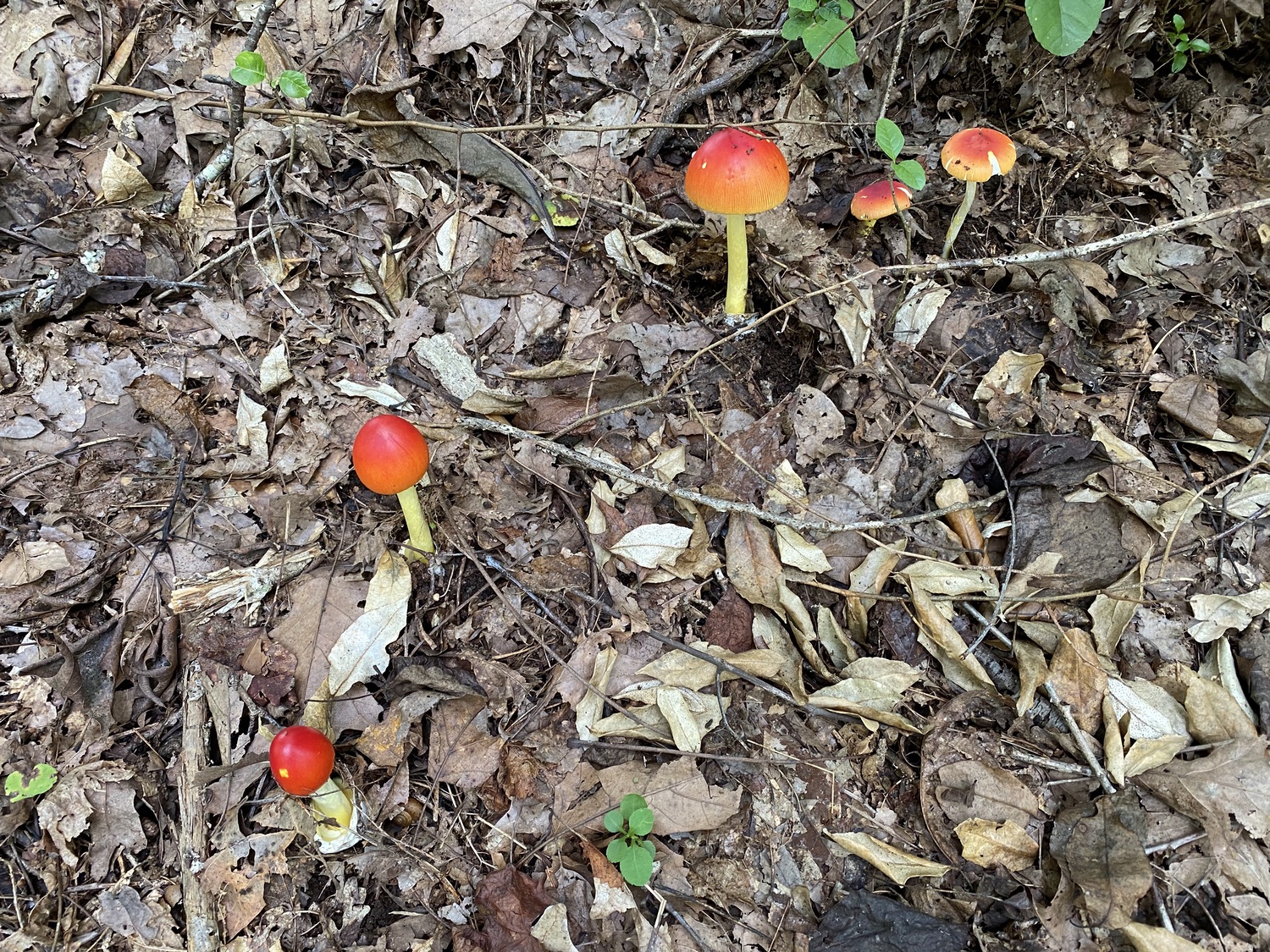
Two-colored Bolete? (No scientific name). The next three are all boletes, with yellow pores and a variably reddish stem. I am unsure of the names of all three. The first of these was very common in the UGA Botanical Gardens on the White Trail and the Orange Trail. These were often large, with caps over 15 cm wide. The top of the cap is reddish brown and dimpled and the stem is solid red. The edges of the cap curl upwards. I am particularly unsure of the name of this as the top of the cap and deep red stem does not look like anything in the field guides.
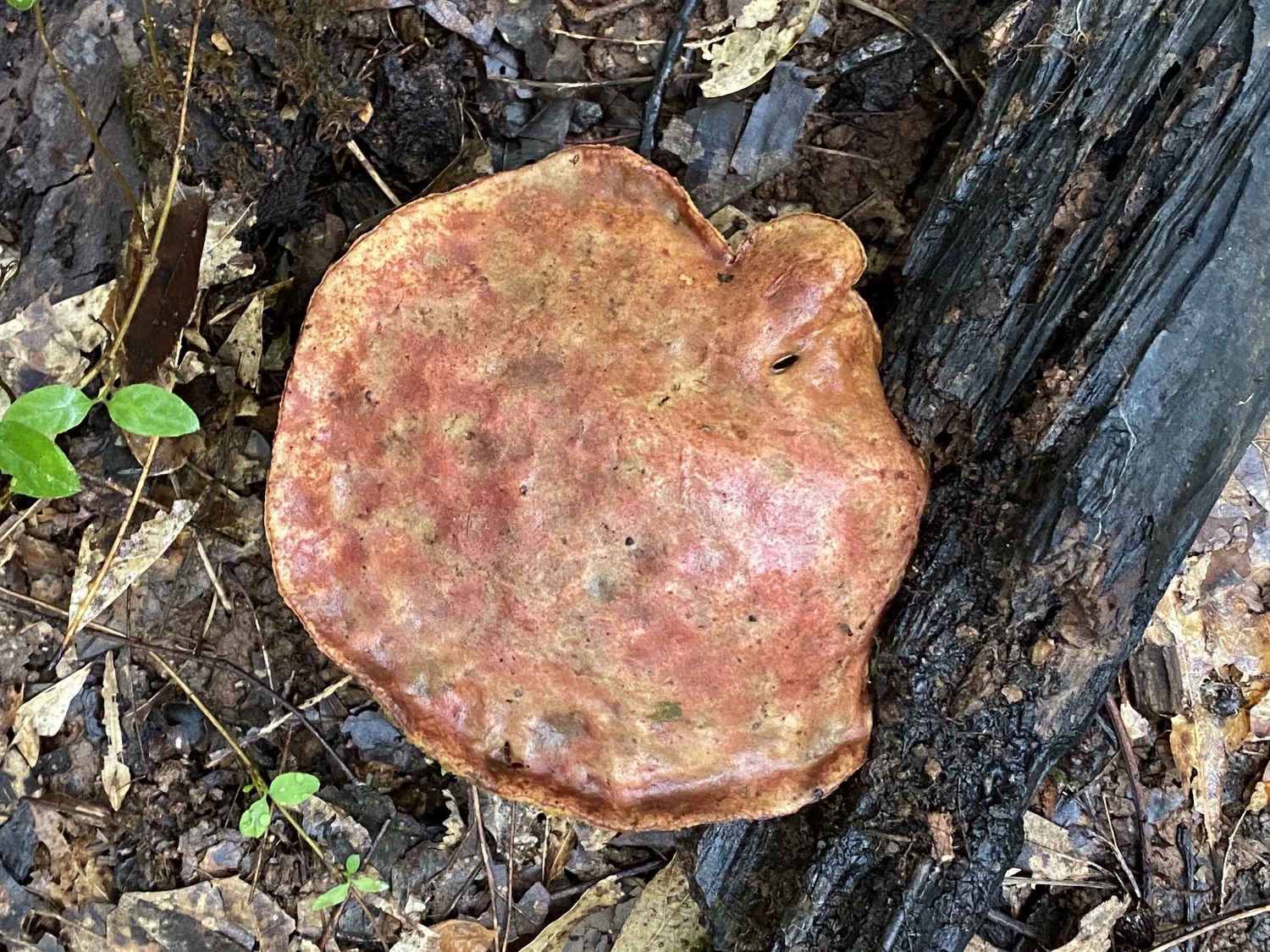
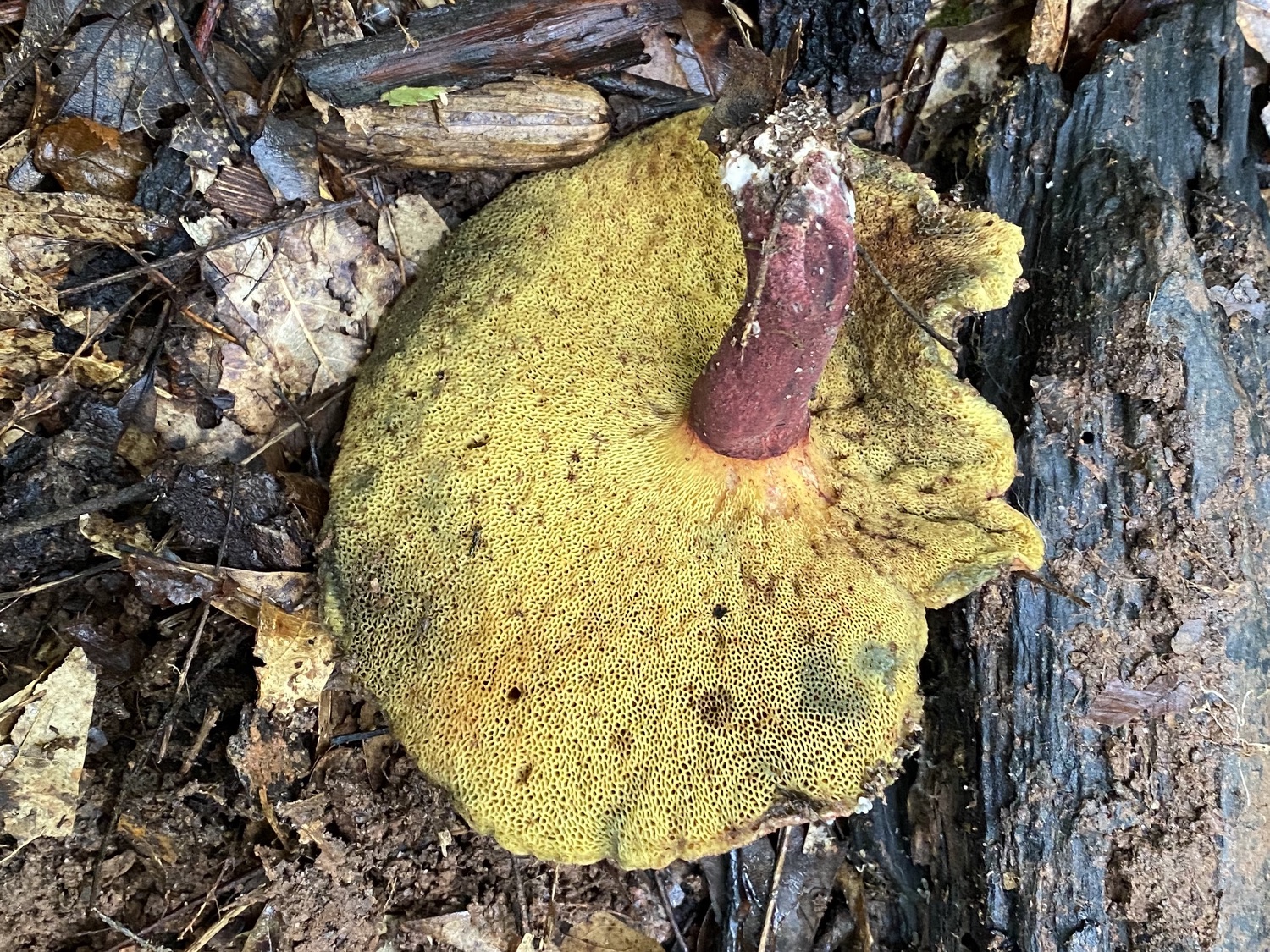
Brick-Red Bolete? (Boletus sensibilis). I found this in our yard. It has a stem that grades from reddish upwards to yellow where it joins the cap. The top of the cap is pinkish brown, and curls down. The Brick-Red Bolete is often reddish-pink
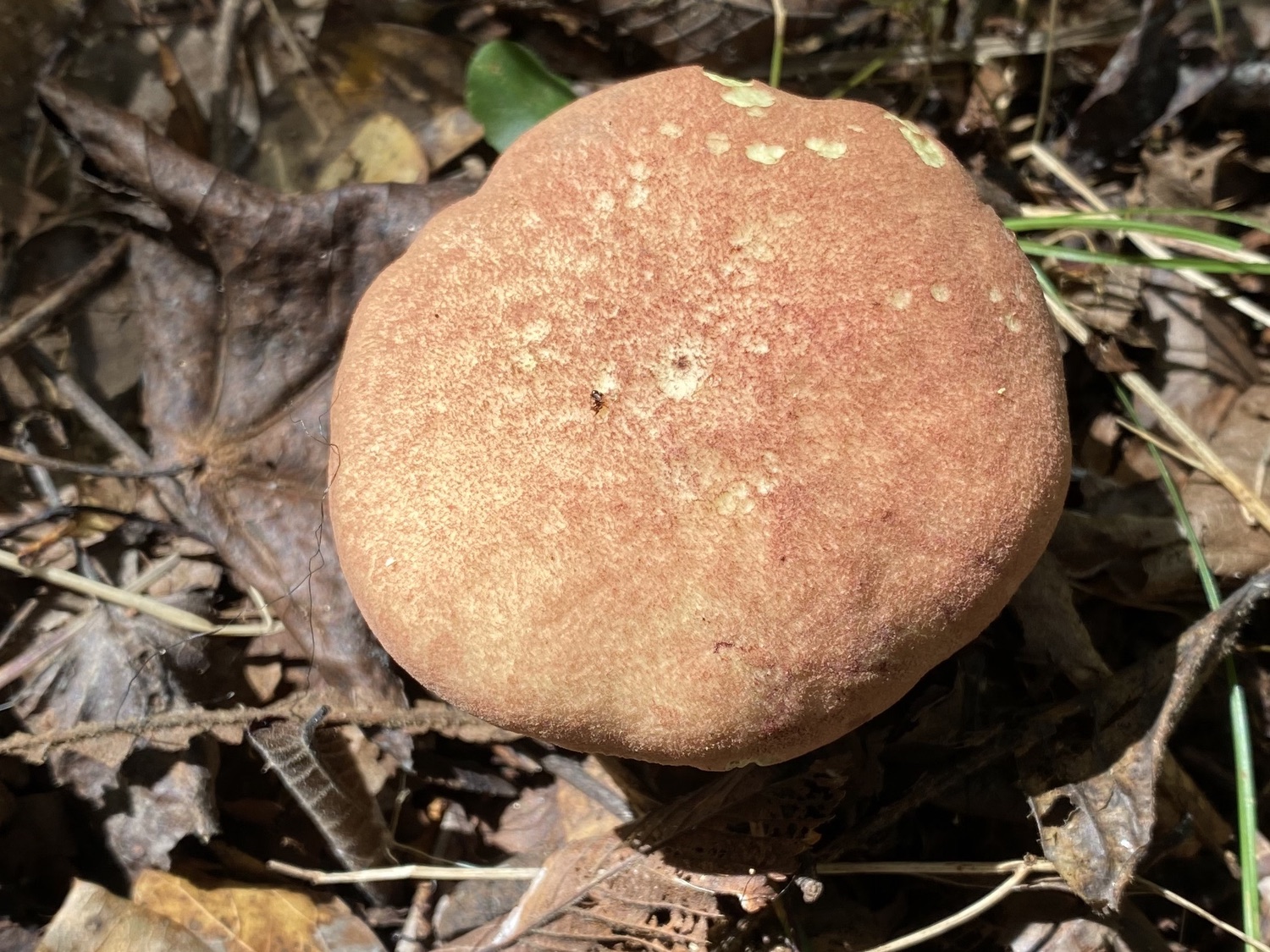
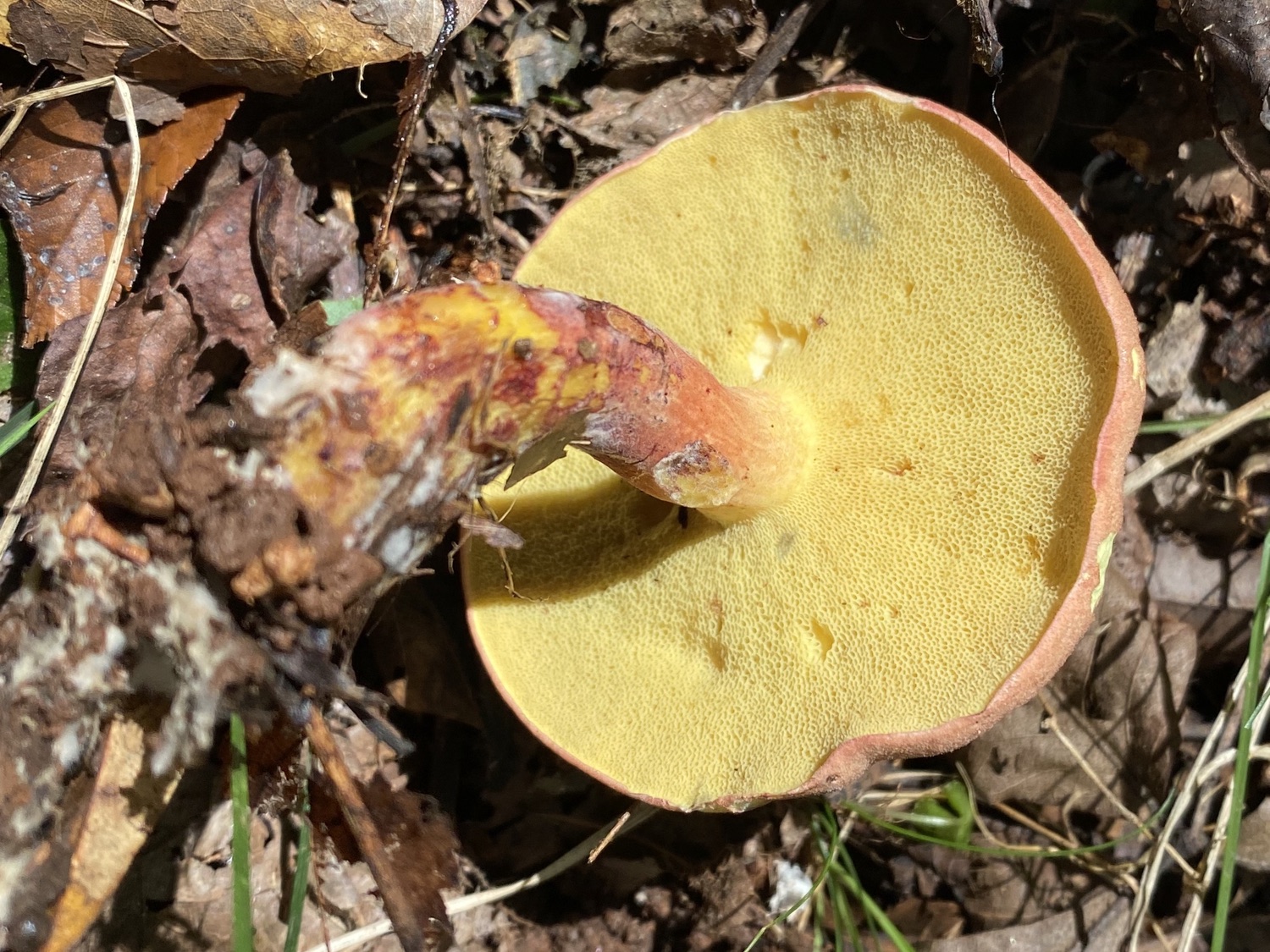
Ruby Bolete (Hortiboletus rubellus). These are small (caps about an inch across), with a dry red cap edged in white (or yellow). The stem is reddish below, passing upwards into yellow. As is typical of boletes, the underside of the cap is covered in pores rather than gills, and the underside is yellow. These were growing out of the bank above the river in our back yard.
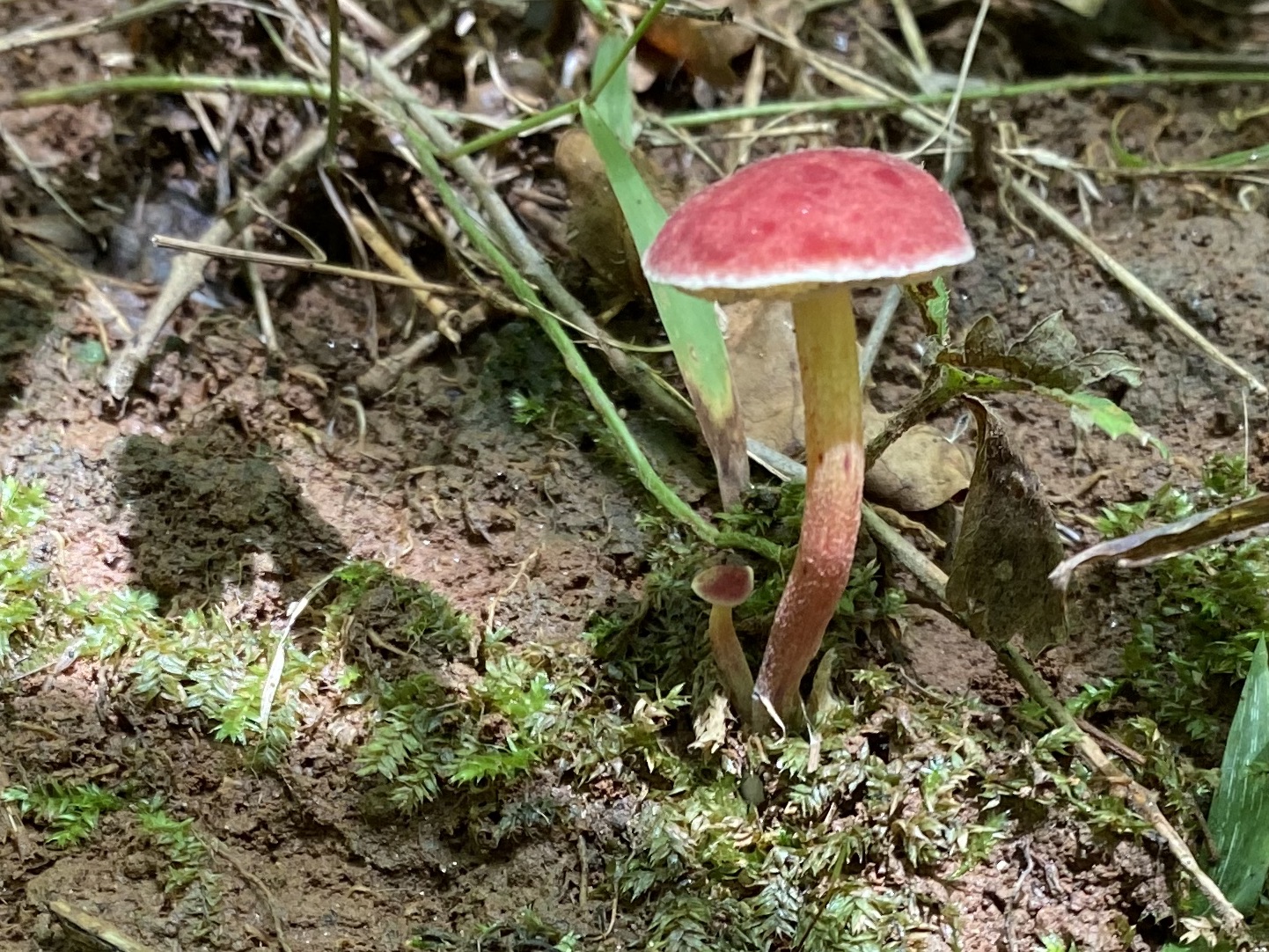
White Coral (Ramariopsis kunzei). These were growing out of wood and consist of white branches with pointed tips. These are from the UGA Botanical Gardens along the White Trail, and this was the only clump I saw.
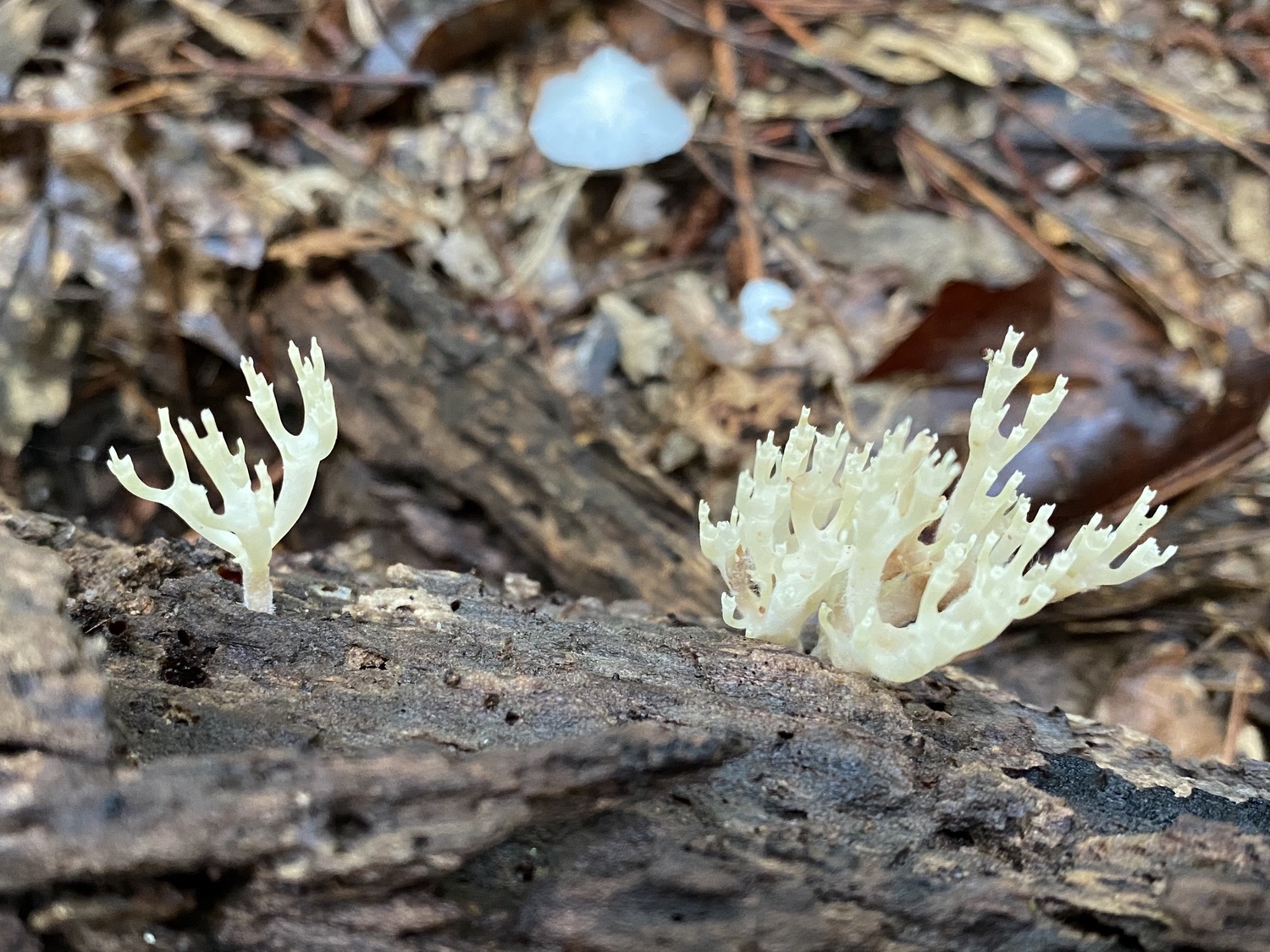
Abrupt-Bulbed Amanita (Amanita (sect. Lepidella) abrupta). These large mushrooms (caps can be 20 cm wide) have a white cap that flattens as it opens. It is covered with pointed randomly place white to tan warts. Underneath are white gills and a delicate white veil. The base of the stem abruptly widens, giving this species its name. Woehrel and Light say that no other species in the area is white and has this bulb-like base. I photographed this one along the road on Currahee Mountain, but I have also seen it in the UGA Botanical Gardens and in our neighborhood.
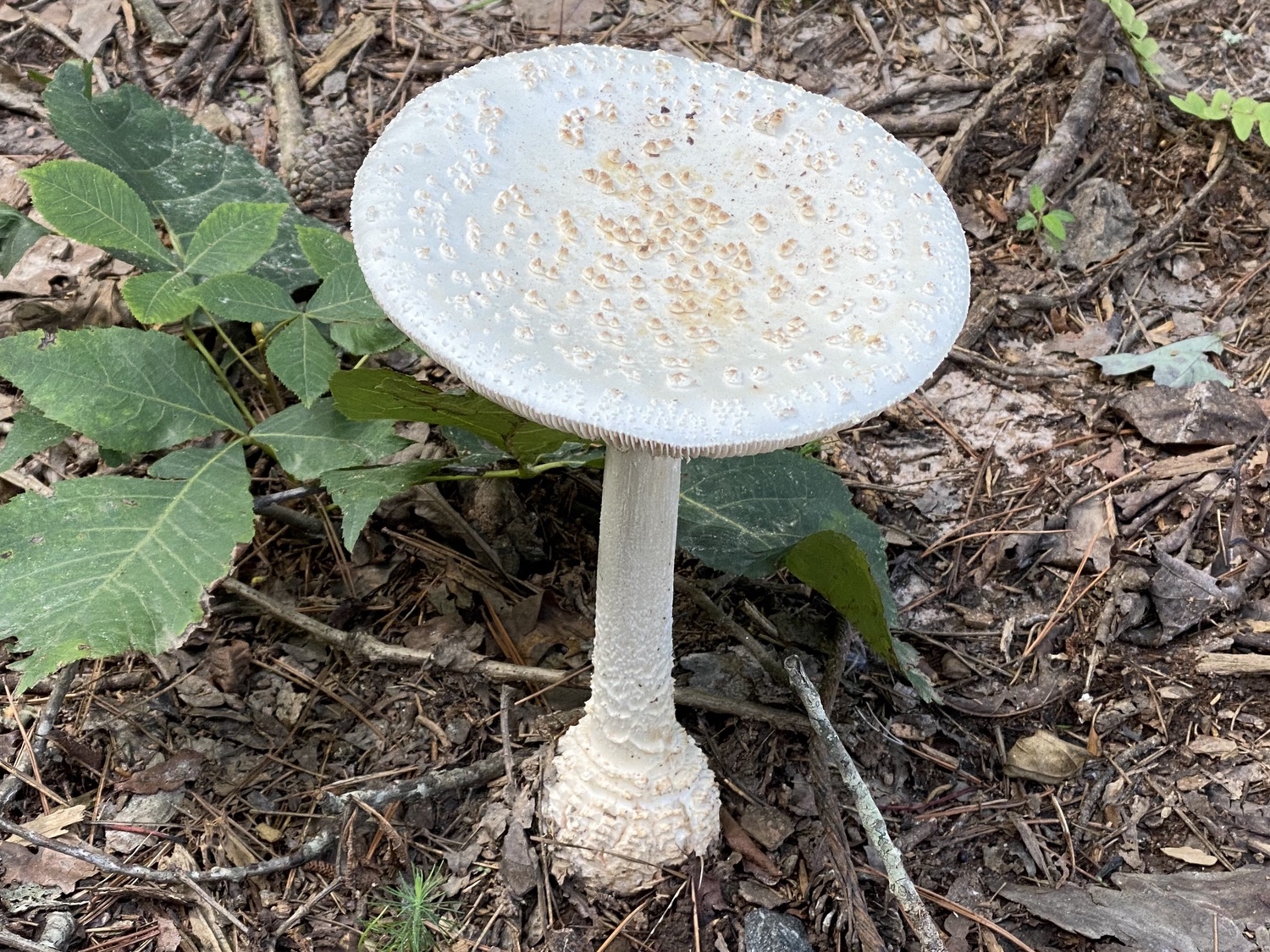
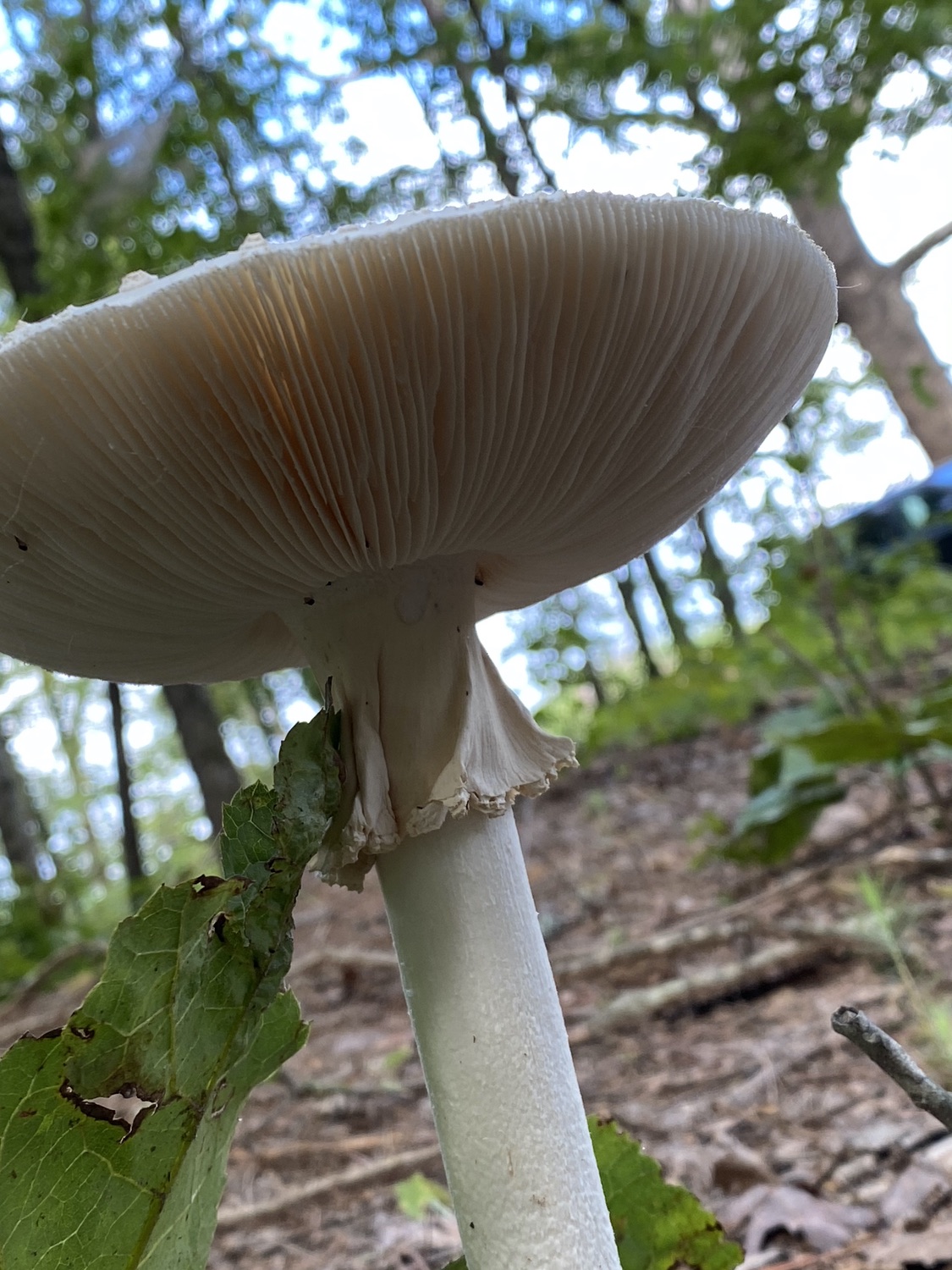
Cinnabar-red Chanterelle (Cantharellus cinnabarinus). These very small chanterelles (caps are about nickel to quarter-sized) are strikingly red-orange. These grow in small clumps, and the edges of the caps can be smooth to highly ruffled. The underside of the cap has stout, well-attached gills that extend down the stem. The stem is curved and tends to taper downwards. These were growing in several places along the forested part of the road leading up Currahee Mountain.
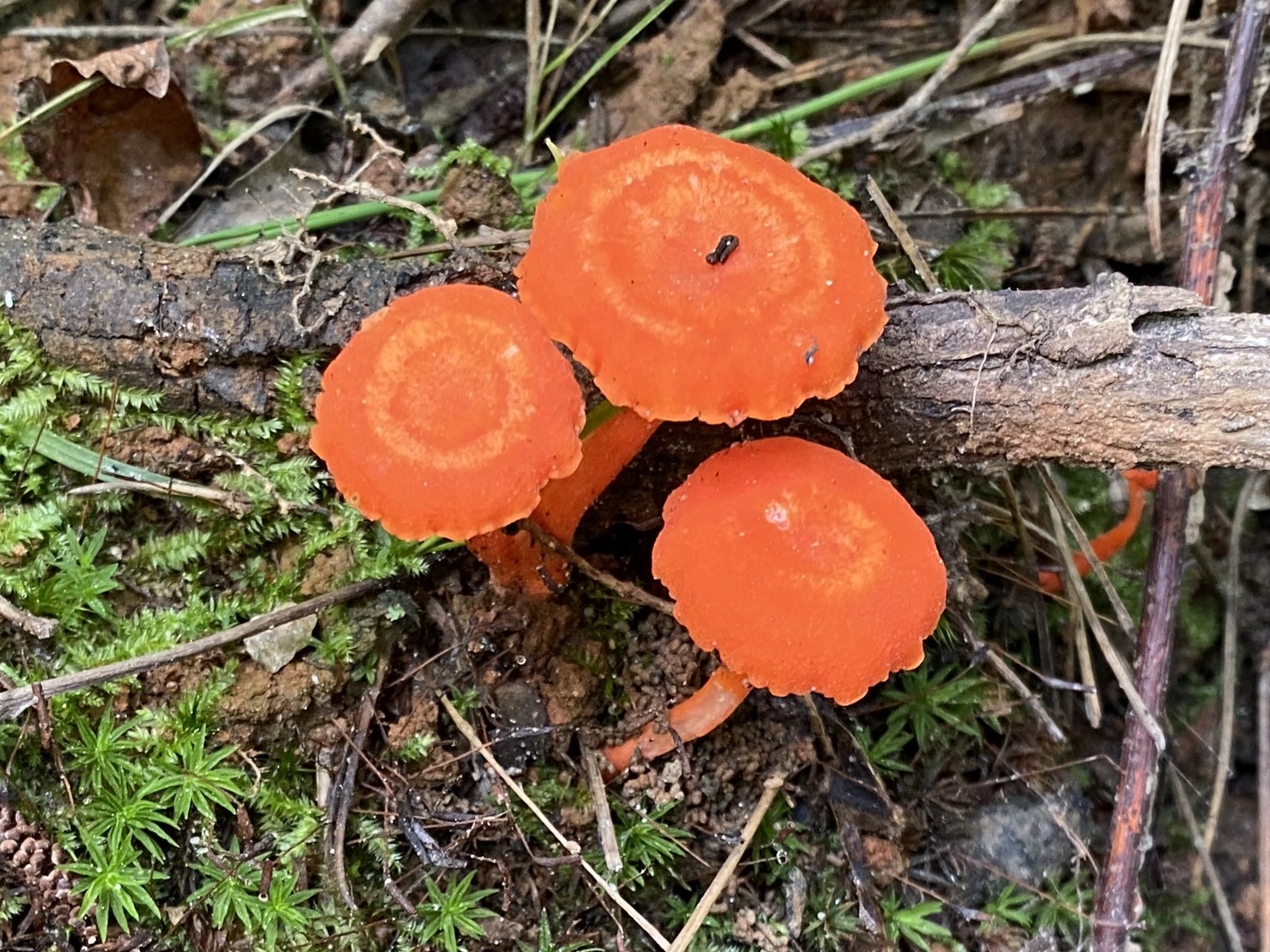
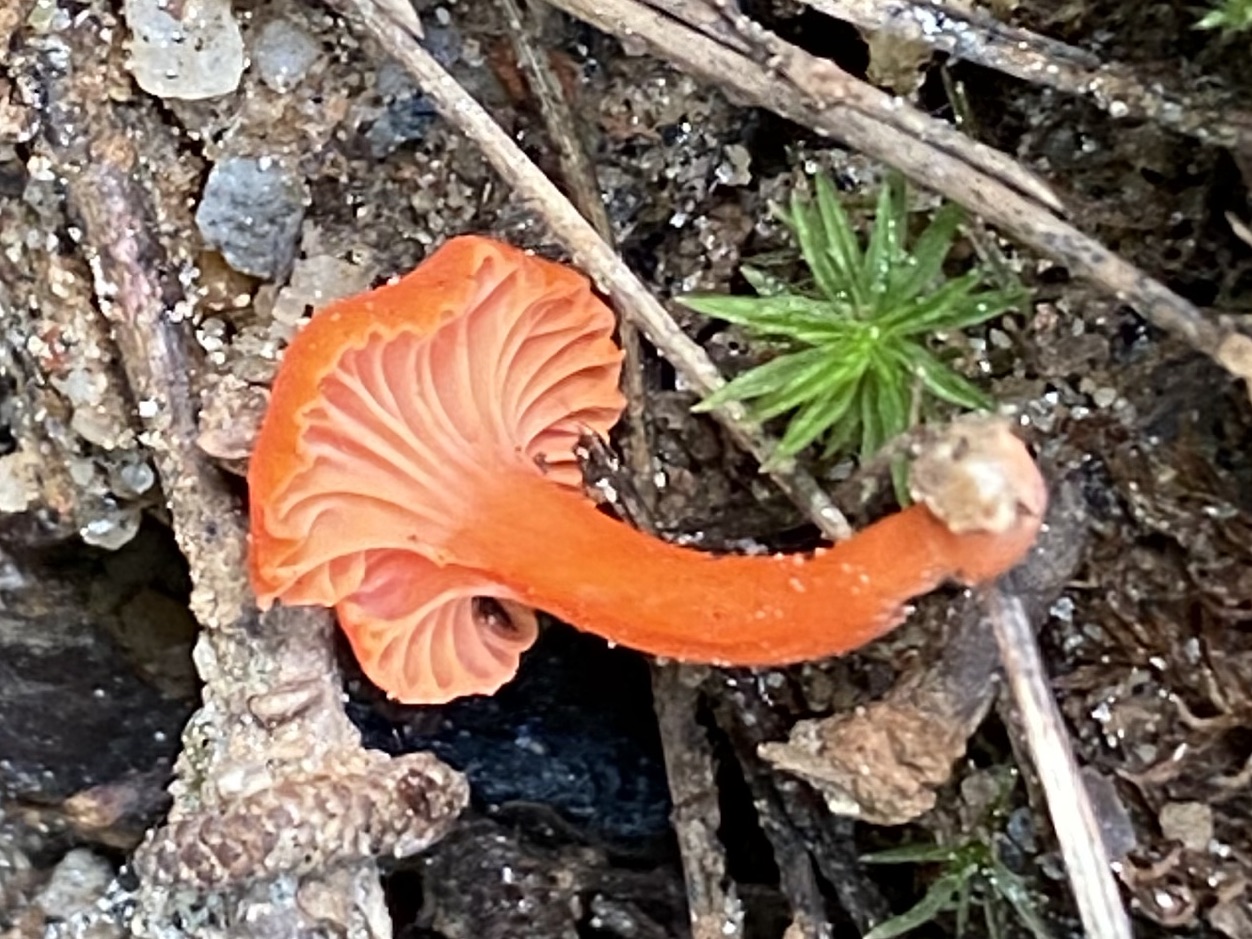
Purple-spored Puffball (Calvatia cyathiformis). Although the purple-brown mass of spores inside is diagnostic, the surface pattern is apparently characteristic, and I can find no others in Woehrel and Light that look like this. Several of these were growing in the gravel at the edge of the road up Currahee Mountain, along the lower part of the road where the forest has been clearcut.
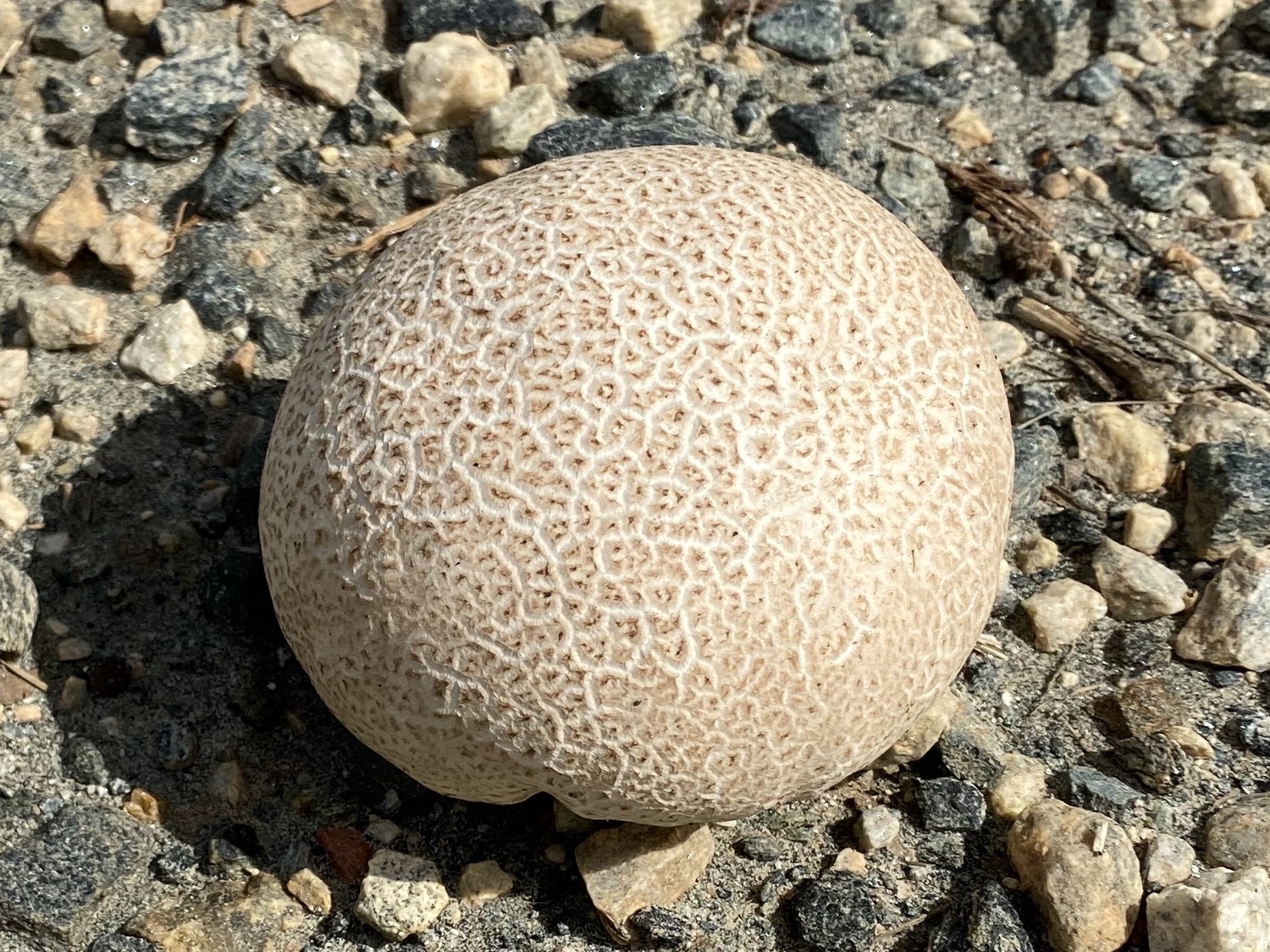
References
Woehrel, M. L., and W. H. Light. 2017. Mushrooms of the Georgia Piedmont & Southern Appalachians. University of Georgia Press, Athens.